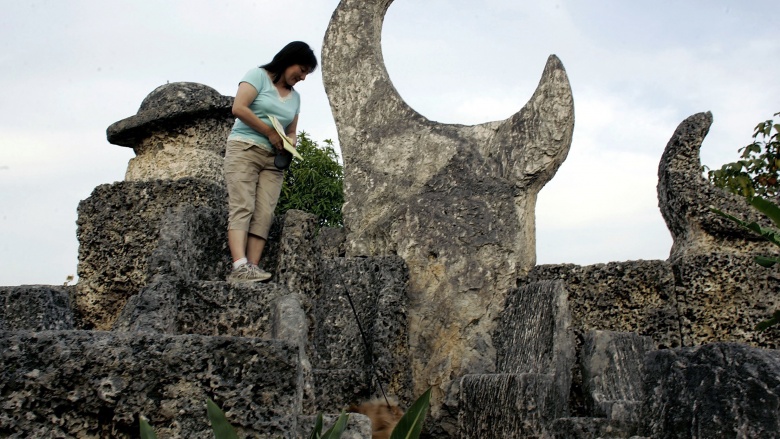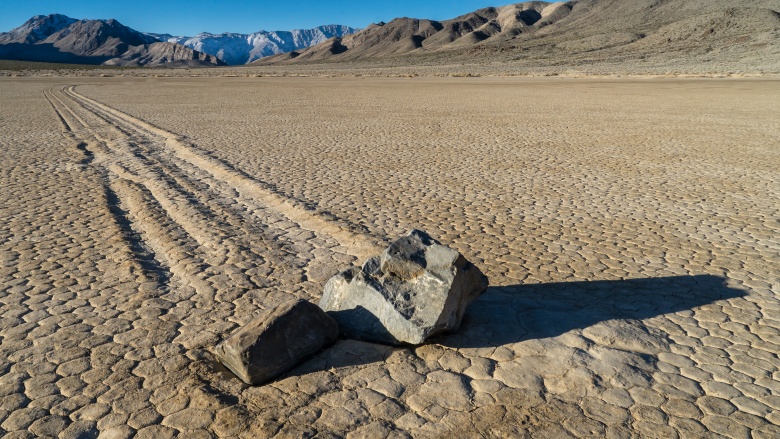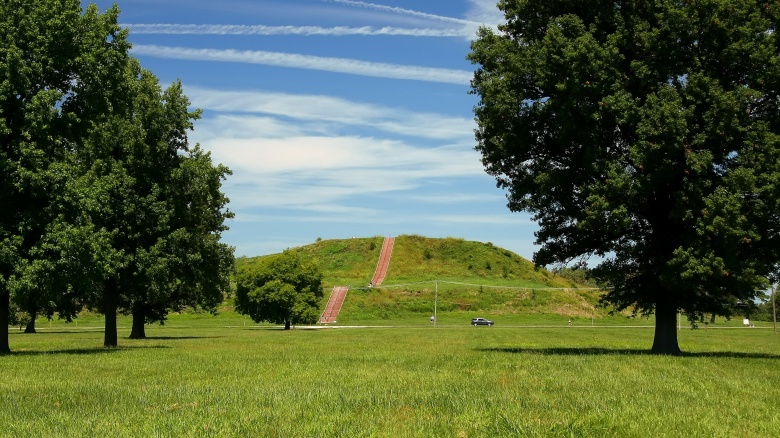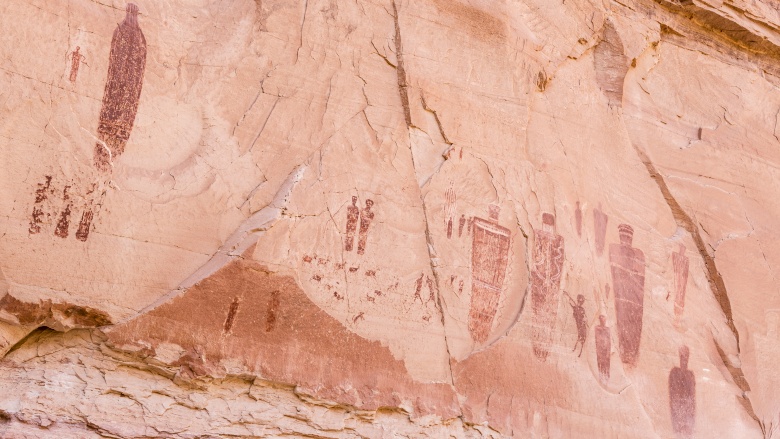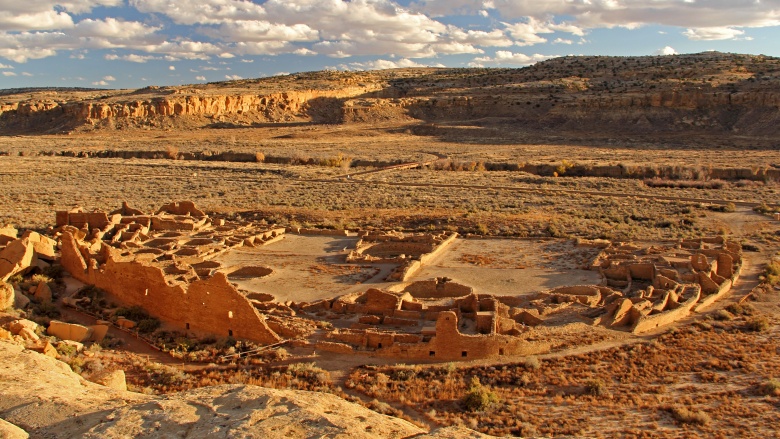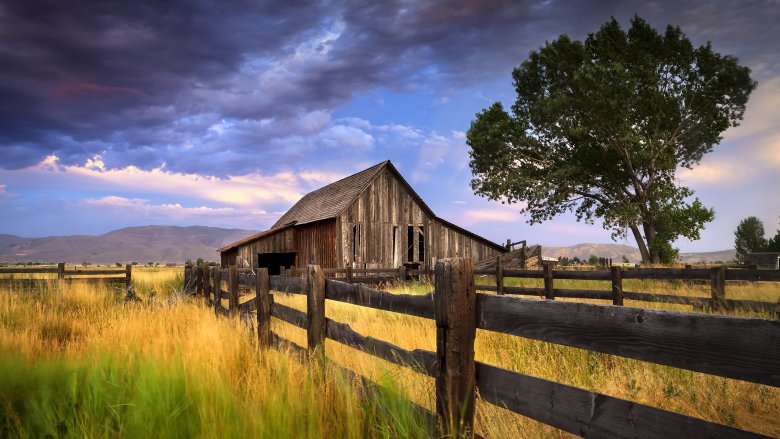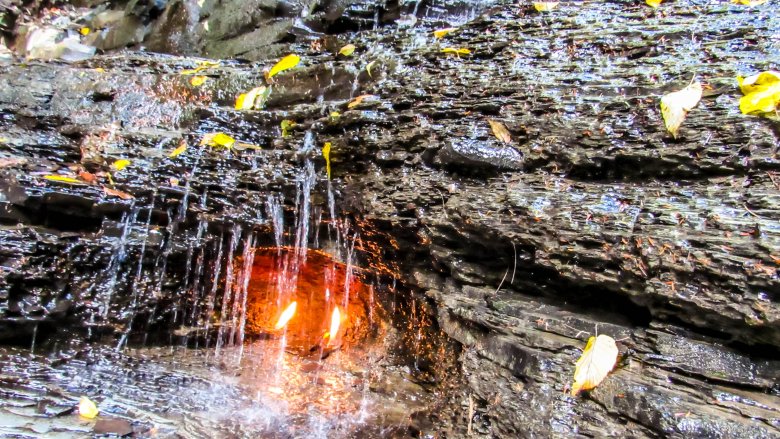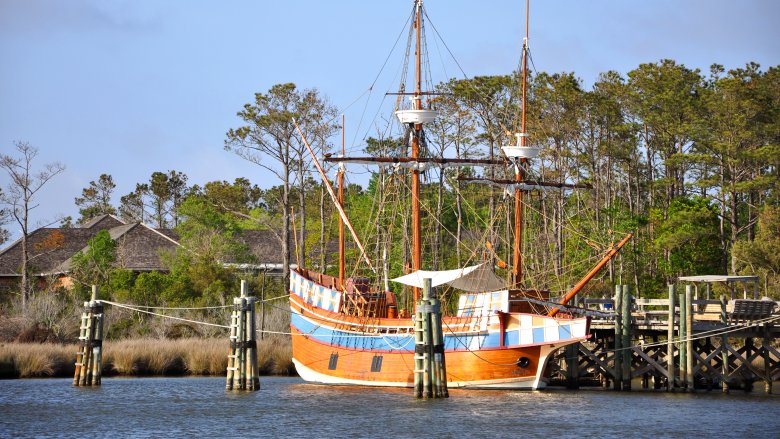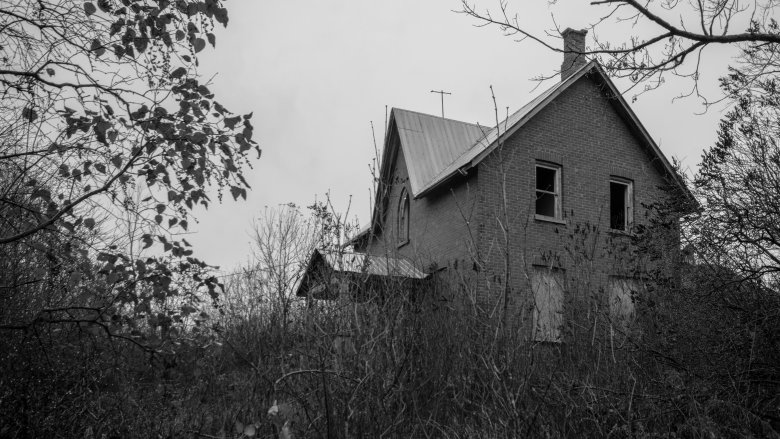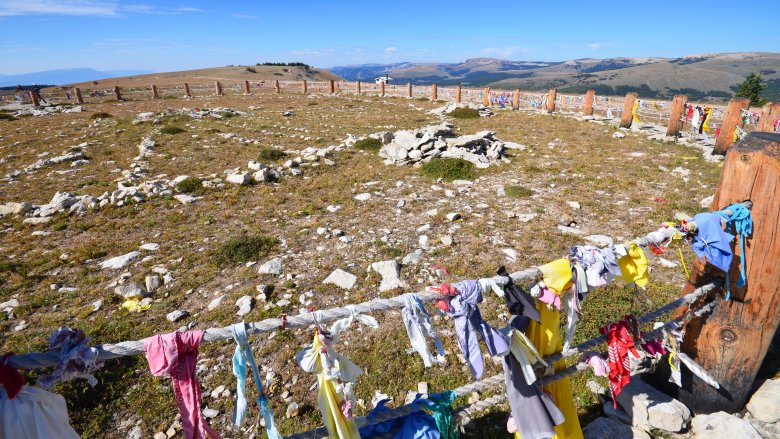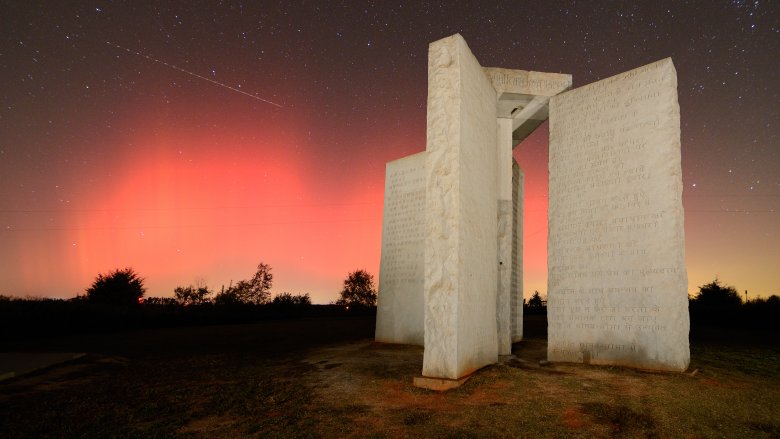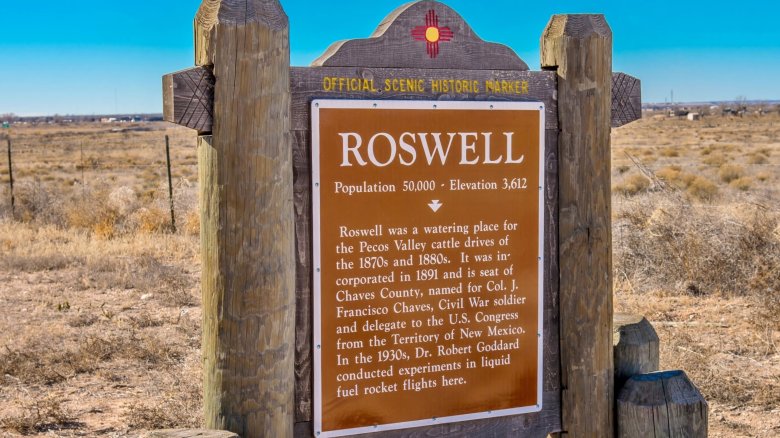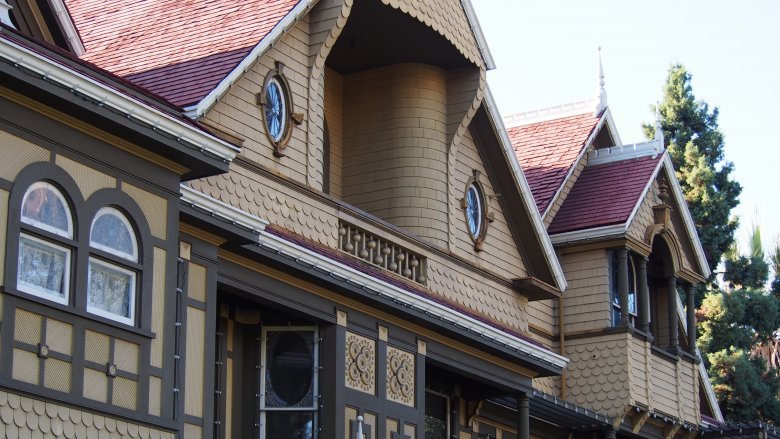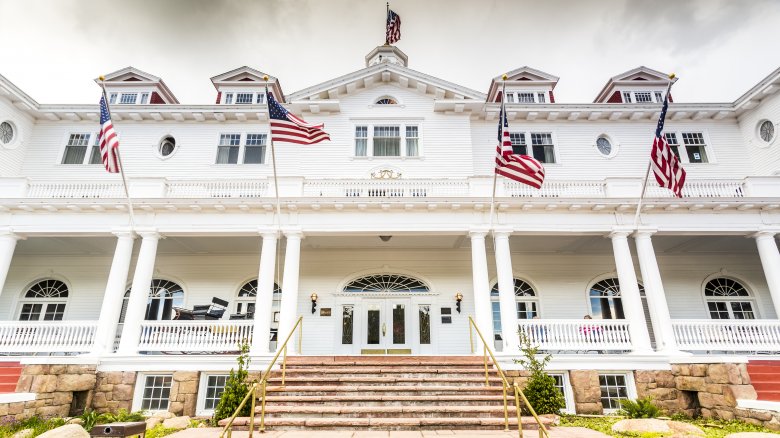The Most Mysterious Places In America
The day-to-day grind of living in a modern developed nation can take some of the mystery out of life: you know where your coffee comes from, why the Walmart was built, and how your health insurance works (well, maybe not that last one). Nevertheless, it's understandable that people yearn for travel and new experiences. But what you might not know is that you don't need to cross an ocean, or dig out your passport, to discover mysteries and great adventure, because there's plenty of that right here. Read on to discover a few of America's most mysterious places, and your next road trip destination.
Coral Castle
Edward Leedskalnin spent 28 years constructing Coral Castle in Homestead, Florida, but how he did it is something of a mystery. Constructed of massive blocks of limestone averaging 15 tons each that he quarried from nearby, Coral Castle is a haphazard arrangement of standing stones, sculptures, and buildings. There's little explanation for how a 100-pound man from Latvia could have single-handedly quarried, moved, and carved the 1100 tons of stone the structure was eventually comprised of, without heavy machinery. When asked, he simply claimed to know the secrets of the building of the pyramids.
The only eyewitness reports came from a group of kids, who described him working at night and making stones levitate like balloons filled with hydrogen. He claimed to have built the structure in honor of his long-lost love, who abandoned him the day before they were due to marry, leaving him heartbroken. If true, this gives a whole new, and very literal, meaning to the phrase "emotional walls."
Sailing Stones
Residing in a dried-up lake bed called Racetrack Playa in Death Valley, California, the bizarre Sailing Stones sit at the end of the mysterious paths their movements have left in the dirt. Despite the name of the lake bed they are scattered across, these stones don't move quickly, and if you were watching on one of the rare occasions that they do, you still might not notice—but that they do move is not in doubt. Scientist placed their own stones on the lake bed. fitted with GPS trackers, and while it took a long time, eventually they caught them in motion.
The best theories propose a rare combination of rain, wind, and changing temperatures, but that does nothing to detract from the crazy fact that these stones—some of them weighing up to several hundred pounds—occasionally up and move without human interference, and they leave a trail to prove it. That's a lot more life than you'd expect from a rock, especially in a place called Death Valley.
Cahokia Mounds
The stereotype of Native Americans is one of small groups of nomads, traveling around and living in temporary camps. But while that may have been the case when Europeans arrived in the late 15th century, a few centuries earlier, things were quite different. Evidence for this can be found in Illinois, at a place called Cahokia Mounds. Currently comprised of a group of nearly seventy earthen mounds, it is believed to have numbered over 120 when the site was occupied between 700 to 1400 AD. At its peak, around 1200 AD, the city probably had a population of around 100,000 people, and covered an area of six square miles.
Many skeletons have been found at the site—some buried in obvious ceremony, and others displaying evidence of human sacrifice—but that is not the mystery. Within two centuries of the civilization's peak, the site had been completely abandoned. Since the occupants left behind no writings, little evidence exists to explain why. Even the folklore of local tribes lacks any mention of the city, leading to suggestions that whatever happened must have been so terrible, the events were deliberately forgotten. Or, maybe they just got tired of Illinois.
Horseshoe Canyon
Horseshoe Canyon in Canyonlands National Park, Utah, contains a number of ancient pictographs (rock paintings) that have to be seen to be believed. Numbering in the dozens, they are thought to date back between 2000 and 8000 years, and virtually nothing is known about the people who made them. What's almost more mysterious, though, is that at the largest site in the canyon, the Great Gallery, are a series of large—a few even life-size—paintings of humanoid figures. And while styles vary between simple red ochre silhouettes and elaborate multicolored patterns, nearly all lack defined arms or legs, and instead often feature large eyes and antennae.
There are probably as many explanations for the paintings as there are visitors to the site (which is far fewer than it could be, since the site can only be accessed by driving several miles down a dirt road, followed by several hours of hiking), but an extraterrestrial explanation is inevitably just a small leap of the imagination away. Another curious feature of the site is the numerous bullet impact marks clustered mostly around the images of bighorn sheep. This seems like a pleasantly direct, though slightly extreme, form of art criticism.
Chaco Canyon
The Chaco Culture National Historical Park, in northwest New Mexico, is another site that reveals the existence of significant ancient civilizations in North America. However, unlike the people who lived at the Cahokia Mounds site, the occupants of Chaco Canyon built in stone. Distributed over nine miles of the canyon floor, a number of great houses were constructed starting around 900 AD, the largest of which, Pueblo Bonito (pictured), contained up to 800 rooms, and reached up to four stories high in places. Many smaller structures can be found in the surrounding area—some up to sixty miles away—that are connected to the central structures by a sophisticated network of roadways.
The construction of these massive prehistoric edifices often incorporated astronomical arrangements, and demonstrate advanced engineering techniques for the time, but despite the size and complexity of the Anasazi civilization, by the beginning of the 14th century Chaco Canyon was largely abandoned. Mysteriously, while some of the structures show evidence of violence and fire, some were abandoned in such an orderly fashion, entrances were carefully closed up and sealed with clay. This quite possibly suggests the people had every intention to return—except, for reasons unknown, they never did.
The Grave of the Female Stranger
The legend goes that a young couple arrived by ship in Alexandria, Virginia in 1816. They stayed in Room 8 of Gatsby's Tavern, where the husband sent for a doctor to tend to his ill wife, who had covered herself with a thick veil upon arriving. That's when things got weird, because the woman's husband wouldn't allow the doctor or nurses to reveal his young wife's identity. She passed away shortly thereafter, and her husband buried her without telling anyone in town about her death.
Her tombstone bears this engraving: "To the memory of a Female Stranger whose mortal sufferings terminated on the 14th day of October 1816 Aged 23 years and eight months. This stone was placed here by her disconsolate Husband in whose arms she sighed out her latest breath, and who under God did his utmost to soothe the cold dull hour of death."
No one knows who this young woman was, nor why her identity was kept secret. Some theorize that she was Theodosia Burr Alston, daughter of Aaron Burr who had been lost at sea, and some people claim to see her ghost roaming the grounds. One thing is for sure—no one would have thought twice about the Female Stranger if she had a name. So if you want to be remembered forever, make sure to leave your name off of your tombstone.
Skinwalker Ranch
Think only crazy people see UFOs? If so, you'll be surprised to learn about the perfectly normal family who moved into Skinwalker Ranch, Oregon and then left after just two years due to paranormal activity. Terry and Gwen Sherman, their kids, and their herd of cattle, moved into Skinwalker Ranch in 1994. They reported seeing a ship the size of multiple football fields, hearing disembodied voices speaking in different languages, and even spotting a seven foot tall man. On 12 separate occasions, they saw floating spheres hovering above the ranch.
Some of their cows disappeared and they found others killed and mutilated. They lost 20 percent of their herd in just 20 months. The Shermans often experienced identical nightmares and took to sleeping together, hoping they would be safer if they were all in one place.
Finally, they'd had enough. They sold the ranch to Robert T. Bigelow, owner of the hotel chain Budget Suites of America, for $200,000 and Bigelow converted the ranch into a research center called the National Institute of Discovery Science (NIDS). The researchers documented additional sightings of UFOs and otherworldly animals until NIDS finally shut down in 2004. If you want to visit Skinwalker Ranch today, you're out of luck, because the current owners have closed it off to visitors. Maybe it's better that way—you don't want to end up like one of the Shermans' cows.
Eternal Flame Falls
Eternal Flame Falls, a beautiful pair of waterfalls in Orchard Park, New York, gets its name from the flame you can always see flickering behind it. The flame doesn't stay lit through magic — it's constantly reignited by hikers. It's not the only eternal flame in existence, either. There are actually a few hundred of them around the world.
The strange thing, however, is that the flame can keep burning despite its location. Eternal flames are possible because of reactions caused by old and burning hot shale rocks. The shale rocks at Eternal Flame Falls, however, are lukewarm at best, and made out of young shale. Plus, tons of water constantly pours around the tiny flame.
In 2013, a team of scientists visited the falls to research why this eternal flame keeps burning. They found that it has more ethane and propane of any eternal flame site in the world. You can visit the falls if you want to see the mysterious flame for yourself. Remember to bring a lighter so that you can keep it burning.
Roanoke Island
Roanoke Island was home to the first English colony in the New World. It's also the site where nearly a hundred settlers seemingly vanished into thin air. In 1587, John White led a group of settlers to the island, one of a chain of islands off the coast of North Carolina. Less than a year later, White went back to England for supplies, leaving his wife, daughter, and infant granddaughter behind along with the rest of the colony. Although it was meant to be a relatively quick trip (as quick as traveling by ship between England and America could be in those days), war delayed his return for nearly three years. When he returned, he found the colony abandoned and looted, with no trace left of the settlers or his family.
No one knows what happened to the settlers. The only two clues were the word "Croatoan" carved into a post and the letters "CRO" on the trunk of a tree. This led some to believe they may have traveled to Croatan Island, or been killed by Native Americans or absorbed into their tribes. Or perhaps they tried to sail back to England, only to be lost at sea.
In 1998, two teams of archeologists excavated the areas near Roanoke Island, using a map that White had drawn. They found possible evidence of the settlers, including pottery, a ring, and part of the hilt of an iron rapier. They theorized their findings meant the settlers did indeed join the Native American tribes near Roanoke. But why was the island looted? And why, if they hadn't been killed, didn't White's family try to find him? Those questions still remain unanswered.
Oregon Vortex
The Oregon Vortex in Gold Hill, Oregon, is about as weird as its name implies. The house is rumored to contain brooms that stand on their own, alter people's heights by changing their molecular structure, and repel animals due to the strong magnetic force contained within its walls. It's been drawing crowds since 1930, and nearly 80 years later in 2012, a team of investigators from the show Fact or Faked: Paranormal Files went to the house to see it lived up to the hype.
They did debunk the claims that balls rolled uphill in the house and that brooms stood up on their own. But they weren't able to fully explain why people's heights seemed to change. One of the investigators, Jael De Pardo, said that when she did the height changing experiment, she felt a heavy weight on her shoulders.
The team also tried to disprove the claim that animals avoided the house by riding horses through the area. But as soon as the horses got in the area of the vortex, they headed in the other direction. Compasses failed to work normally in the area, which led the team to believe that massive magnets may be buried beneath the house.
They may not have conclusively shown whether the vortex was fact or faked, but they did share that they enjoyed visiting this strange and mysterious house. If you want to visit, too, it's open March through October. Just don't try to arrive on horseback.
Bighorn Medicine Wheel
If you fly a helicopter over the Bighorn Range in Wyoming during the summer, you'll see something incredible: a gigantic medicine wheel. It's 80 feet across and 28 spokes emanate from its center. There is a large cairn, or circle of rocks, in the middle, and six on the outside of the main circle.
The mysterious thing about the medicine wheel is its accuracy. After researching the wheel, archaeo-astronomer Jack Eddy suggested that it was built to predict the position of the stars and the sun during the summer solstice. He found that the way the outer cairns connected pointed to different celestial events. By sitting in one cairn and looking at another, you can see where the sun rises and sets during the summer solstice. Others pinpoint the spots in the sky where stars reappear at dawn after they've been covered by the sun's light for a season.
Many different Native American groups use the medicine wheel to do the Sun Dance ritual, seek visions, and make prayer offerings. It's also a registered National Historical Monument. You can hike up to it in the summertime, so don't worry about renting a helicopter (unless you really want to).
Georgia Guidestones
In June 1979, a man named RC Christian approached the Elberton Granite Finishing Corporation about completing a curious project. He insisted that cost wasn't an issue and seemed to have an endless supply of money. After the project was completed, all plans for the project were to be destroyed and all information about him kept a secret.
Nine months later, the Georgia Guidestones were revealed for the first time to a group of around a hundred people. The viewers saw four granite slabs, each around 20 feet tall, circled around a center slab with a capstone on top. Each of the guidestones contained ten instructions for humanity, beginning, "Maintain humanity under 500,000,000 in perpetual balance with nature; Guide reproduction wisely — improving fitness and diversity; Unite humanity with a living new language; Rule passion — faith — tradition — and all things with tempered reason; Protect people and nations with fair laws and just courts." These instructions were written in eight different languages: English, Spanish, Swahili, Hindi, Hebrew, Arabic, Chinese, and Russian.
After commissioning the monument, the man who called himself RC Christian disappeared. Despite the obvious care and attention put into constructing the guidestones, no one knows exactly why Christian wanted them built, nor what their messages really mean. The stones, which include the words, "Let these be guidestones to an Age of Reason," seem to defy all reason.
Roswell
In July of 1947, a rancher named Mac Brazel in Roswell, New Mexico discovered strange debris in his sheep pasture. He called the sheriff, who called the local army air field, who sent intelligence officer Major Jesse Marcel out to the site to investigate. Marcel looked at the debris and concluded that it was the remains of a fallen flying saucer. The next day, the Roswell Daily Record put out an article headlined "RAAF Captures Flying Saucer on Ranch in Roswell Region."
That same day, officials investigated further and declared that the debris was actually a destroyed weather balloon. The next day the Daily Record printed a retraction of their original story, and an embarrassed Major Marcel shared that he had been wrong. Later on, it came out that the weather balloon story had, in fact, been a cover up. The debris in Brazel's yard actually came from Project Mogul, a highly classified military project, in which scientists had been sending out high altitude balloons containing sound sensors with the goal of spying on nuclear tests in distant locations.
Despite the emergence of this new information (or perhaps because of it), many still believe that Roswell is the site of a massive government cover up. What do you think?
The Winchester House
There's no better example of the old saying "money can't buy happiness" than this huge, strange house in San Jose, California built by Sarah Winchester. Winchester's father-in-law, Oliver Winchester, who manufactured Winchester rifles, died in 1880. A year later, her husband Will and her one-month-old daughter died as well.
When she moved to San Jose in 1886, Winchester's home was an eight room cottage surrounded by rolling hills and orchards. She became convinced that her husband and father-in-law had died due to the angry souls of people who were killed by Winchester rifles. According to a relative, Winchester went to a medium who told her that the only way to avoid being haunted by these spirits forever was to keep building and building her house.
Build she did. From 1886 until Winchester's death in 1922, she employed teams of 16 construction workers to work on her house 24 hours a day, seven days a week. At its peak size, before the 1906 earthquake, the house contained 200 rooms, an astonishing 10,000 windows, and 2,000 doors, trap doors, and spy holes. Today, the house is filled with oddities like stairways to nowhere, rooms built inside of each other, and balconies on the inside of the house.
No one knows whether Winchester built her house based on the guidance of ghosts, or if she built it to avoid their retribution. One thing is for certain, though—she built a legacy to gun violence that's not easily forgotten.
The Stanley Hotel
Freelan Oscar Stanley arrived in Estes Park, Colorado in 1903, sick with consumption. Within one season, he fully recovered, and vowed to stay and make a grand hotel in this little town in the wilderness. In 1906, he built The Stanley, an East Coast style hotel, the likes of which had never been seen in the area before. Some guests claim that Stanley loved the hotel so much he can still be seen roaming the lobby and that his wife, Flora, still presses down keys on the piano, which she played to entertain guests in the heyday of the hotel.
The grand hotel gave new life to the town, and by 1917 it was an official municipality. But then, the hotel fell into disrepair. In the 1970s, it was in danger of being closed down — only to be rescued by an unlikely savior. Stephen King stayed at the hotel for one night, and was inspired to write The Shining, one of his most popular novels. King stayed in room 217, and in the novel, a clairvoyant character is told not to enter that room.
Since then, the hotel has become known as a center for ghosts and spirits. If you visit the Stanley, make sure to take their Night Spirit tour to learn how to interact with ghosts. But, the website warns, "Due to the fact that spirits are not on payroll, we do not guarantee any interactions."

